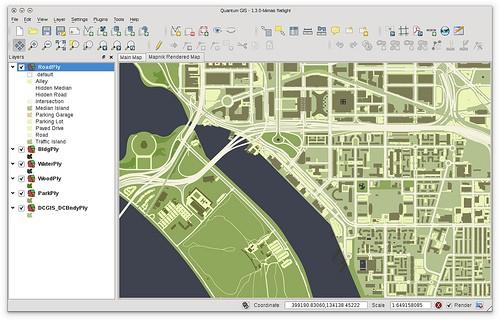Setting up Mapnik used to be one of the trickiest parts of our workflow. Dane Springmeyer’s recent work on Mapnik Installers for OSX changes that, making it easy to install Mapnik and its needed Python bindings, and allowing for total integration with QGIS and Quantumnik. The setup takes a little more than five minutes. Here’s a look at the UI for QuantumGIS, with the Mapnik rendering:

This is important for us and other open source GIS teams. Here is a little background on our internal workflow that lets our cartographer, programmers, and researchers cooperate seamlessly on a project. Typically we’ll have a PostGIS enabled database on an Amazon EC2 that our researchers can add data to. Then AJ, our cartographer, can use QGIS to connect to this database and access the data. From there he uses Quantumnik, a QGIS plugin that integrates with Mapnik, to provide a solid GUI for tile design. Then we use TileMill to pre-render complete tilesets, and finally our programmers work to integrate the results into our custom tools. For a detailed visual of our work flow, read Will’s post about our tile generation process.
What we're doing.
Latest